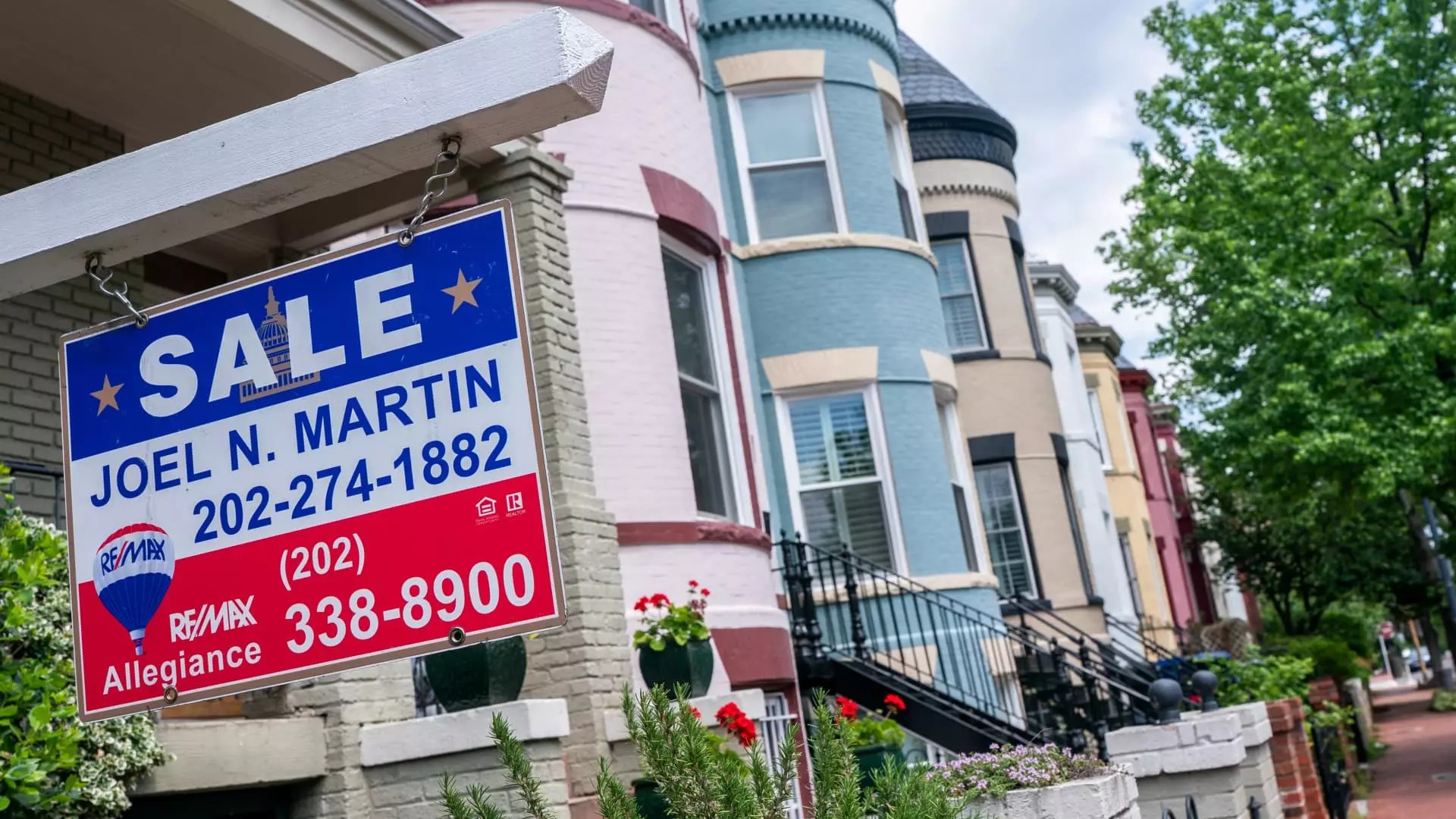In the spring of 2023, the housing market illustrated a dismal reality as it struggled beneath the weight of sky-high interest rates and increasingly wary consumers. The stark decline in existing home sales—a 0.5% plummet from the previous month to a measly rhythm of 4 million units—puts into stark perspective a troubling trend. This metric, revealed by the National Association of Realtors, marks the slowest April since 2009, plummeting sales by 2% compared to the same month last year. The anticipations of a 2.7% increase fueled by pent-up demand were all but dashed. The moral here? Dreaming of homeownership is becoming less about aspiration and more about resignation in an unfriendly economic climate.
Despite the seemingly buoyant figures of added jobs in the economy, real estate activity remains stagnant at about 75% of pre-pandemic levels. Prominent economist Lawrence Yun hints at a peculiar paradox; the job growth created has not equated to an uplift in home sales. This unsettling observation begs the question: what good are jobs if they can’t empower individuals to invest in their most important asset? In this environment, consumer confidence feels like a distant star—one that homeowners yearn to reach yet cannot even begin to envision in a spiraling mortgage rate landscape.
The Burgeoning Housing Inventory Dilemma
Navigating this tumultuous housing terrain, we see an inventory rise of 9% month over month—almost 21% higher than last year. This elevated supply points toward an empathetic narrative; it is a glimpse of hope for frustrated buyers tired of endless bidding wars. Yet, as the inventory swells, with 1.45 million homes on the market, it simultaneously reflects a struggle. Indeed, a four and a half months’ supply may insinuate ease, but it emphasizes that the market remains under pressure with far fewer transactions than desired. Ironically, a rising stock of available homes coupled with reduced competition might lead to cooling prices, alleviating some pressure from household budgets, yet it still brings forth the haunting question—why are buyers retreating?
Interestingly, while the median home price has reached an astonishing $414,000—record-breaking in its own right—the growth in value has slowed tremendously, clocking in just a meager 1.8% year-over-year increase. Herein lies a convoluted contradiction: prices may be higher, yet the rate of appreciation dwindles. Areas in the South and West are experiencing not simply decline but a corrective shift in values. The question I pose is this: could we be on the cusp of a larger market correction, signaling an unmasking of inflated prices back to reflect the realities of today’s economy?
Behavior Shifts Among Buyers
Adding salt to the lingering wounds of a fading housing market is the persistent rise in contract cancellations, now hitting a 7% rate. This figure starkly surpasses the recent average of 3% to 4%, painting a picture of a buyer’s remorse festering amidst the bypassing hopes for homeownership. First-time buyers continue to command a robust 34% of the market, yet with elusive affordability and frequent cancellations, they may soon find themselves outshined by more seasoned investors looking to snag discounted properties as prices begin to stabilize.
It’s essential to contemplate whether the pulse of this market is not carved in the challenges of first-time buyers alone. It appears that the luxury segment—homes priced above $1 million—has also seen a bounce, albeit a waning one, attempting to weather economic adjustments. Has the stock market shakeout that disheartened many affluent buyers truly led to these high-end gains? There’s a looming weight on this sector that hints at its fragility, given the upward pressure of interest rates and economic uncertainty weighing heavily on investor mindsets.
In an era when dreams of homeownership feel increasingly distant for many, the need for effective solutions becomes more crucial than ever. A recalibration is necessary—policy changes that prioritize affordable housing and support first-time buyers are not merely beneficial, they are essential. As we plunge further into this uncharted territory, one thing stands clear; if we view housing merely through the lens of market speculation rather than as a fundamental human need, we risk irreparably damaging the landscape of our communities. The path forward must acknowledge that the concept of home stretches beyond bricks and mortar; it is intrinsically tied to stability, security, and the very essence of who we are as a society.


Leave a Reply